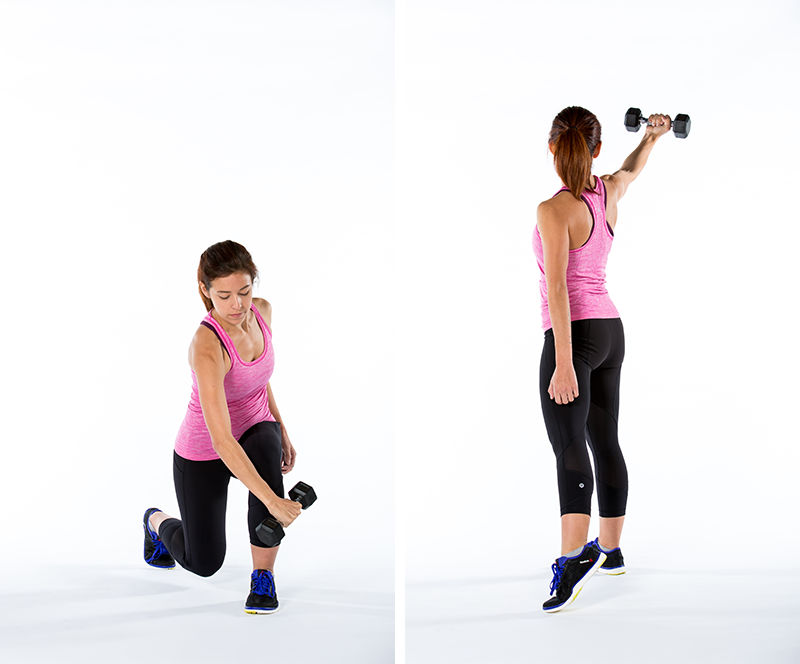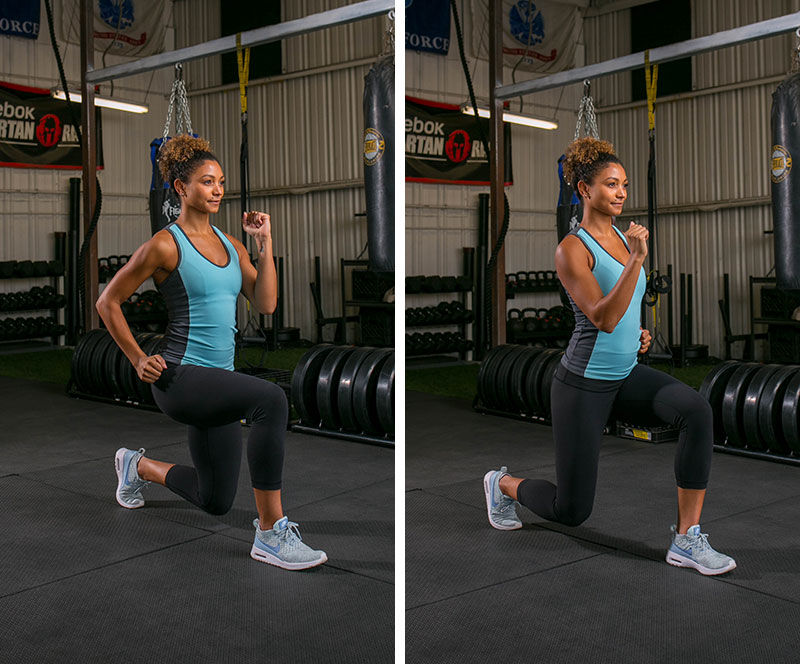While there is a seemingly endless supply of articles touting "the best way to stretch," the truth is there is no one-size-fits-all approach to stretching. In fact, the appropriate application of stretching techniques can be different for each client, depending on the client’s needs and goals and at which point in the workout the stretches are performed.
Stretching for corrective exercise and performance are not necessarily different or contradictory concepts. It isn't uncommon to begin working with an athlete of any age and any skill level, who performs well, but is struggling with chronic or recurring injuries. Once that client is released by his or her doctor, your program design must include a combination of mobility and stability exercises to create a good foundation for strength and power increases.
You are likely familiar with many types of stretching, including proprioceptive neuromuscular facilitation (PNF), pin and stretch, myofascial release on the foam roller, ballistic stretching and static stretching, to name just a few. Each has an important place when applied appropriately. This blog focuses on two fundamental concepts about stretching that will help you incorporate stretching in a meaningful way to your program design.
Why does your client need to stretch? This may seem to be a silly question, but starting with a clear point of view about why your client needs to stretch dictates an important first step. Two basic starting points for a solid foundation on which to build strength and power include posture and mobility.
- Align a postural discrepancy: Your client may notice or have a chiropractor, physical therapist or athletic trainer point a postural imbalance that is leading to movement dysfunction. A common example of this is hyperlordotic posture in an athlete who is struggling with recurring low-back pain.
- Improve mobility: An athlete who has struggled with chronic injury needs to work progressively to improve the activation and elongation of muscle fibers for maximized reflex contractility.
Depending on your clients' needs, you will employ different techniques at different phases of their workout plans.
Postural Discrepancy
In identifying a postural discrepancy, it is possible that the practitioner has identified the imbalance as the catalyst of the recurring injury. It is not uncommon that the discrepancy itself was caused by a surgery or injury. Acute or chronic injury or surgical intervention of any kind will result in scar tissue, decreasing the elasticity of the soft tissue.
Another post-injury reality is the disruption of neurological responsiveness of the muscles. This change in neurological reaction will temporarily affect strength, reaction time and proprioception. If not addressed, other muscles will compensate for this deficit, causing a chronic imbalance. When working with female athletes, it is also important to be aware that pregnancy has an effect on the ligamentous and muscle structure. Return to sport post-pregnancy without allowing for a proper muscle building and structural balancing period may cause the postural imbalances that lead to injury.
When addressing postural imbalance with stretching, first clearly identify the shortened muscle(s). To restore range of motion, identify a stretch the elongates the muscle in the direction of the muscle fibers. In this instance, you are looking to increase the length of the muscle and the soft tissue surrounding the muscle, the fascia and tendon tissue included. This stretch should be held at a comfortable limit for your client. Pain during stretch creates inhibition that counters the stretch. Have your client hold this stretch for as long as he or she can tolerate and continue to progress for longer hold times. This type of stretch creates a static elongation of soft tissue and results begin once the stretch is held for one minute and continue to improve up to three minutes of hold. Warming the tissue prior to hold allows for a more comfortable stretch and may lead to faster results, but results will occur even if the tissue isn’t pre-warmed. If your client has scar tissue as well, it is wise to work with a massage therapist or physical therapist skilled at soft tissue release.
Let's return to the previous example of the hyperlordotic athlete struggling with low-back pain. This posture is often a result of a tight hip flexor complex. Choosing a Thomas stretch or kneeling hip flexor stretch are both excellent positions to lengthen that tissue. The Thomas stretch is a more passive position and might be an excellent place to start when the kneeling hip flexor stretch is too intense or potentially uncomfortable on the low back.
It is important to note that the long, static hold of this type of stretch can work wonders for elongating the tissue, but will also cause a shut down of the nervous system impulses. Because of this, it is best to do a slow and thorough warm-up through a full range of motion of that joint to awaken the nervous system, working up to more ballistic movement, before applying the demand of ballistic, coordinated exercise.
Once the warm-up is complete, you will be training your client with an improved length-tension relationship of the surrounding and supporting musculature, allowing him or her to overload these muscles properly with a well-rounded exercise program, leading to greater strength gains and muscle balance. Over weeks and months of skilled and focused stretch and strengthening, this will lead to a decrease in the postural distortion originally observed. Repeating these stretches at least once every day will affect the rate of success.
Improve Mobility
Mobility is the ability to move freely within the required range of motion. Mobility is also about elasticity, both the lengthening of soft tissue and the reflexive shortening of it. For athletes, mobility is essential to maximize the application of force.
Unlike the static lengthening of tissue, mobility is all about movement, so logically the manner of stretching to increase mobility is movement based as well. To improve mobility, an athlete needs to move safely and in a controlled manner within the range of motion you are trying to increase. By creating a predictable environment for the body to move through the necessary range of motion, you provide the body with a safe, repeatable stretch that allows the soft tissue to adapt productively to the controlled stress put upon it. Conversely, putting an athlete prematurely into a practice or game scenario to move through that same range of motion may result in re-injury, as the soft tissue isn’t ready for that kind of overload.
The other advantage of mobility exercise is that you are training the body for strength and stability at the same time. By providing a light stimulus and progressive overload, you allow the body to build strength and proprioceptive awareness throughout the range of motion.
Here's an example: A tennis player has been released from physical therapy and is struggling to get back the full strength of her serve after a shoulder injury. She is complaining that she doesn’t have the reach she needs. By going back on the court over and over again, struggling to create power on the ball, she is putting her shoulder at risk for re-injury. In the gym, working with light weights through the PNF diagonal patterns, you are supporting her by providing a controlled environment for her to begin developing strength and stability through the necessary range of motion.

Let's take a lower-body example in which you are using body weight and ground reaction force as your stimulus. In the earlier example, we described a hyperlordotic athlete struggling with recurring back pain. Adding mobility exercise in addition to your corrective lengthening stretch will allow for improved motion at the hip joint. Once there is sufficient length of the hip flexor complex, the athlete can resume walking lunges. Doing walking lunges while cognizant of hip and lumbar spine alignment and only in the range of motion in which the hip and lumbar alignment remain neutral, body weight and balance become your overload tool. The progression becomes the increased range of motion of the lunge until the athlete is able to lunge with proper form until the back knee can touch the ground. This movement can be further progressed by adding dumbbells or contralateral rotation of the upper body. It can also be regressed, if necessary, by allowing the athlete to hold onto a stable surface and perform stationary lunges.

By creating a controlled environment for progressively increasing strength and proprioceptive awareness, the body perceives this improved stability and, as a result, the muscle and soft tissue become increasingly more mobile and elastic. With a continued progression, strength, proprioception and stability continue to increase with the increasing range of motion. Once full desired range of motion is reached, continued progressions of strength and power are now being built on a solid base.
By creating a thoughtful and progressive plan to improve range of motion and mobility as separate, but important aspects of an exercise program, you set your client up to have a solid foundation on which to build increasing strength, power and athletic skill.
Learn more about helping clients with joint and muscle pain through Corrective Exercise.




 by
by 









 by
by